ШЕКИ
Sheki is located 380 km to the west of Baku close to Georgian border. Sheki is set in a picturesque mountain area rich in narrow gorges and green valleys, springs, purest rivers, waterfalls and mineral water springs framed by dense woods and alpine meadows. Not far from Sheki in one of the most beautiful and picturesque places of the country is the Markhal Resort.
Archeological data testify that the city can be considered one of the oldest settlements in the Caucasus; many finds on its territory are dated as old as 2,500 years.
The city can boast many historical and architectural places of interest, but its pride is the ancient majestic royal palace of Shekin khans erected in the 18 th century without a single nail with magnificent wall paintings and tracery windows in the stone citadel. Very attractive are Gemsen-Geresen fortress (8-9 th centuries), numerous caravanserais, house of Sheki Khans, Djuma Mosque (18th century), the Gileilin Mosque minaret (18th century), and medieval baths.
Sheki is a major center of crafts. Here you can buy jewels and engravings by local craftsmen. Sheki has its own theatre, a historical museum, the house-museum of the Azerbaijan writer and philosopher M. F. Ahundov.
In Sheki’s vicinities numerous unique monuments of history have survived. Among those are “kyumbazi” towers (18th century) in Kutkashen, Sumug fortress and a mosque (18th century) in Ilisu, a fortress and Kish Mausoleum, a fortress in Ukhary -Chardahlar (4th century BC – 5th century AD ), a tower and a temple in Orta -Zeizit, a mausoleum in Babaratma, a fortress in Kaha (16th century), the ruins of Shamil fortress near Zakatala.
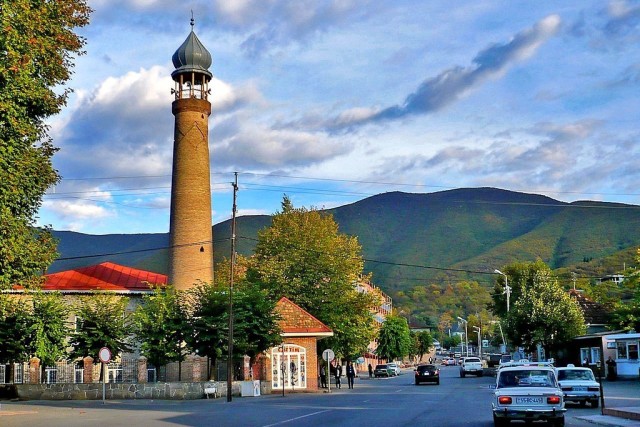 |
Djuma Mosque, Sheki Djuma Mosque (Khan’s mosque) was constructed in 1745-1750, near the market square. Directly in front of the mosque is a small cemetery. Gadzhi C he lebi, the ruler of Sheky (18th century) and his confidants were buried there. These tombs are topped by domes and gravestones with cut out lettering in Arabian language. The mosque, its minaret and the ancient cemetery today are protected by the state as important historical monuments. |
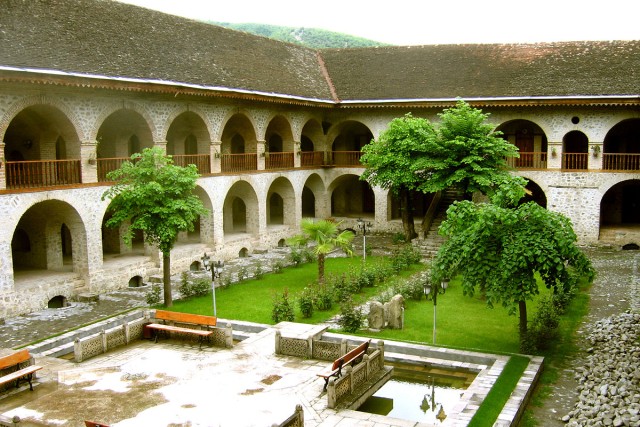 |
Caravan Serais Sheki was famous as the city of craftsmen and merchants. Merchants and traders from the countries of the Great Silk Way used to gather there. Therefore, a great attention was paid to construction of caravanserais. So in the 18th – 19th centuries 5 big caravanserais were active in Sheki. Only two of them have survived. The Upper and the Lower built in the 18th century. Even then the craftsmen tried to provide worthy service to lodgers. Caravan serais were built with a view of all convenience and safety of merchants and their goods. In Sheki caravanserais merchants stored their goods in cellars, traded on the first floor, and lived on the second. |
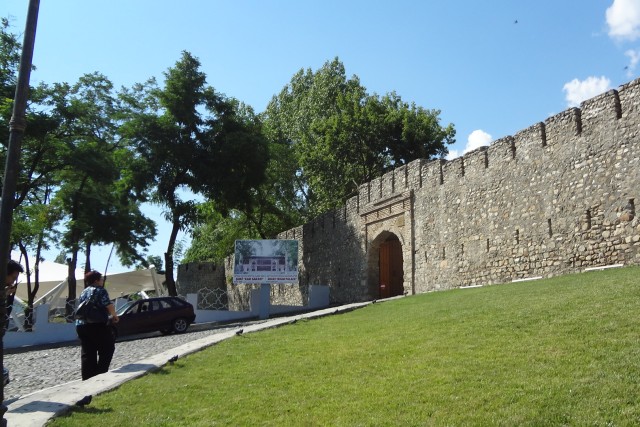 |
Castle Walls, Sheki A Sheki khan Gadzhi Chelebi (1743-1755) during his reign constructed a fortress in the northeast for defense purposes. The overall length of the fortification is about 1,300 meters, its southern height is about 8 m, the northern – 4 m. Thickness of the wall is over 2 meters. 21 towers were located along its length. From the north and the south the fortress was closed by arch gates. The wall and the two towers of the fortress were badly destroyed. But in 1958-1963 the fortress was restored. |
Gileili Minaret, Sheki
Gileili Minaret is a monument of the 16th – 17th centuries. It used to be a part of Gileili Mosque very well known in the city. But unfortunately, the mosque disappeared. Only the minaret, protected by the state, reminds of its existence. Gileili Minaret (built from burnt brick) can be seen in Kyulek hlin makhal of the cit y. It is the first and the highest minaret in Zakataly – a Sheki district.
Babaratma-piri
Babaratma – piri is a small mausoleum located near the city of Sheky. It is located on the territory of the old cemetery near the settlement of Taza-kent. This place is very esteemed by pilgrims. It is believed that it can cure of many illnesses. Near the mausoleum there is a small mosque.
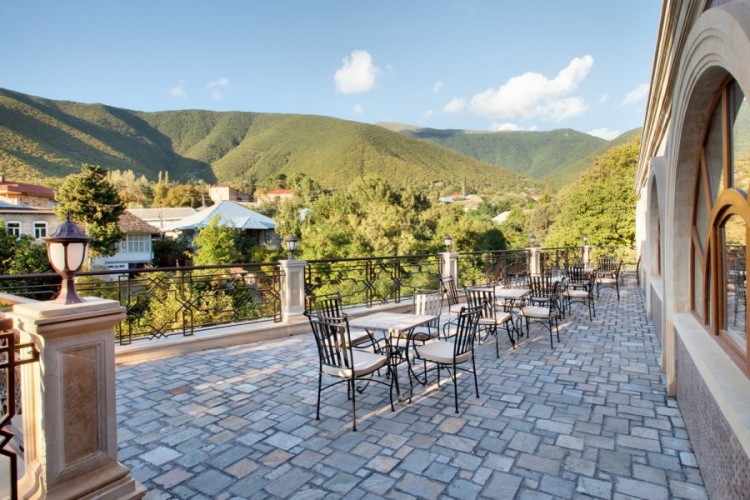
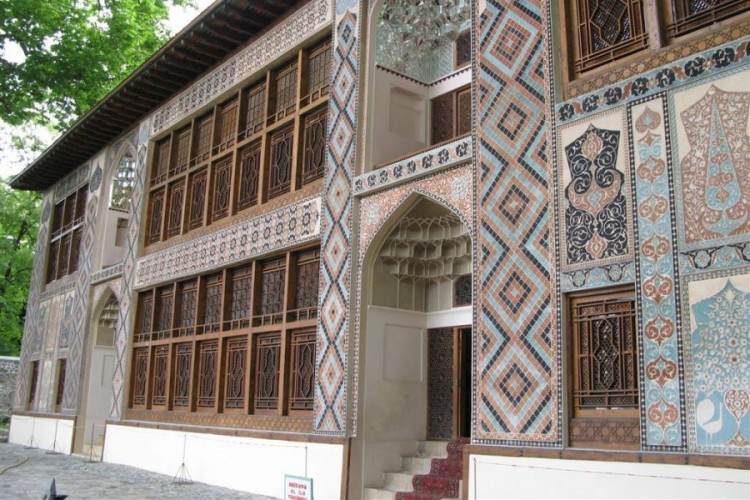
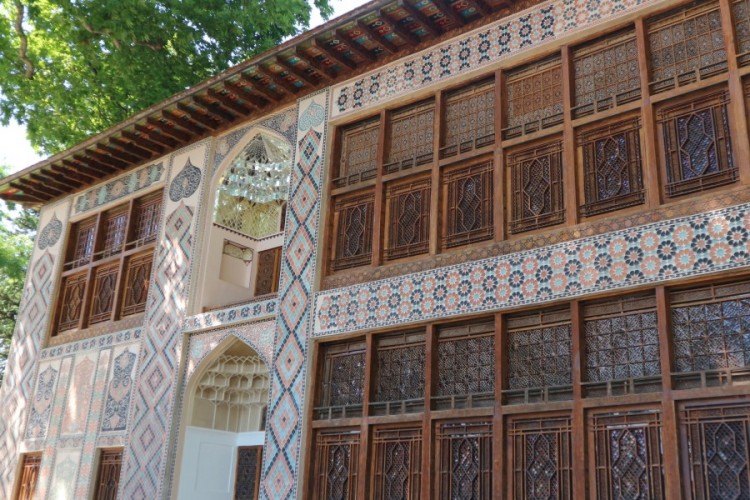
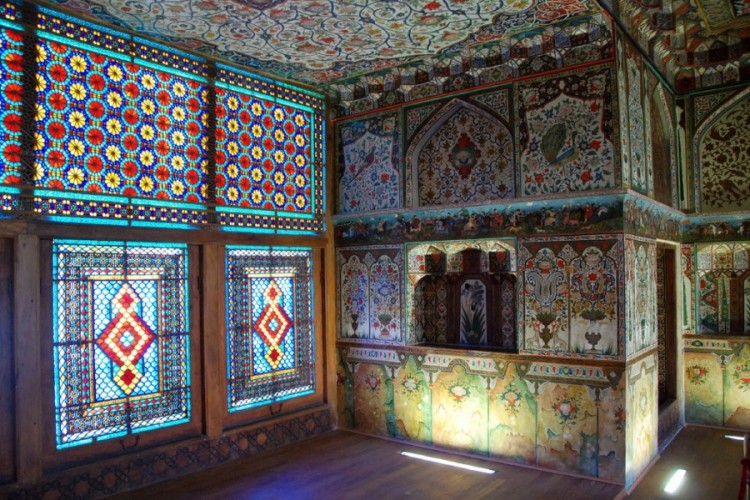
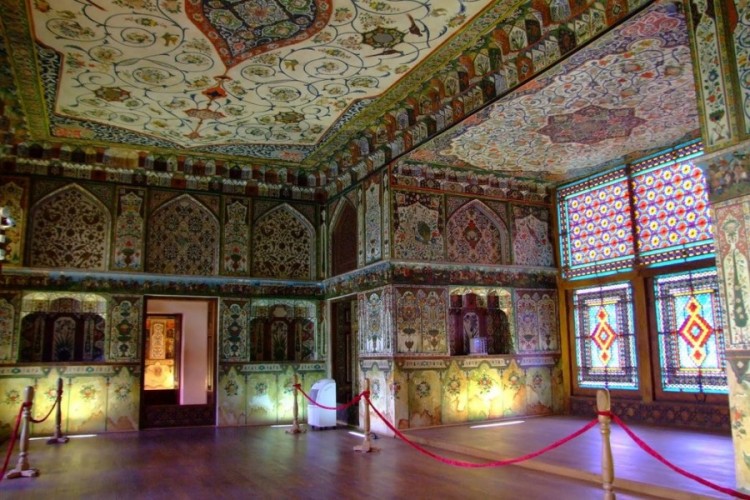
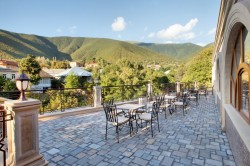
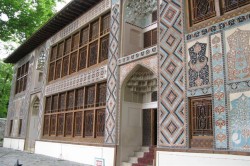
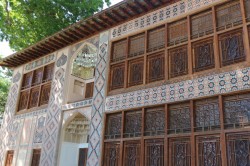
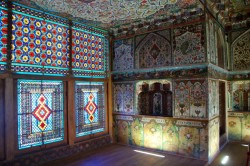
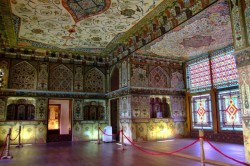
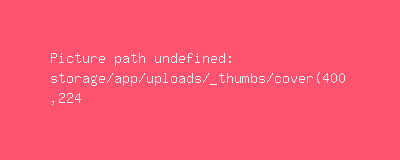/public/63f/f5f/c18/63ff5fc1899d7660630096.jpg 1x, https://sakurageorgia.com/storage/app/uploads/_thumbs/cover(800,448)/public/63f/f5f/c18/63ff5fc1899d7660630096.jpg 2x)
/public/642/d7c/15b/642d7c15b4fd8388783025.jpg 1x, https://sakurageorgia.com/storage/app/uploads/_thumbs/cover(800,448)/public/642/d7c/15b/642d7c15b4fd8388783025.jpg 2x)
/public/63f/22b/1d1/63f22b1d1df2a060349019.jpg 1x, https://sakurageorgia.com/storage/app/uploads/_thumbs/cover(800,448)/public/63f/22b/1d1/63f22b1d1df2a060349019.jpg 2x)
